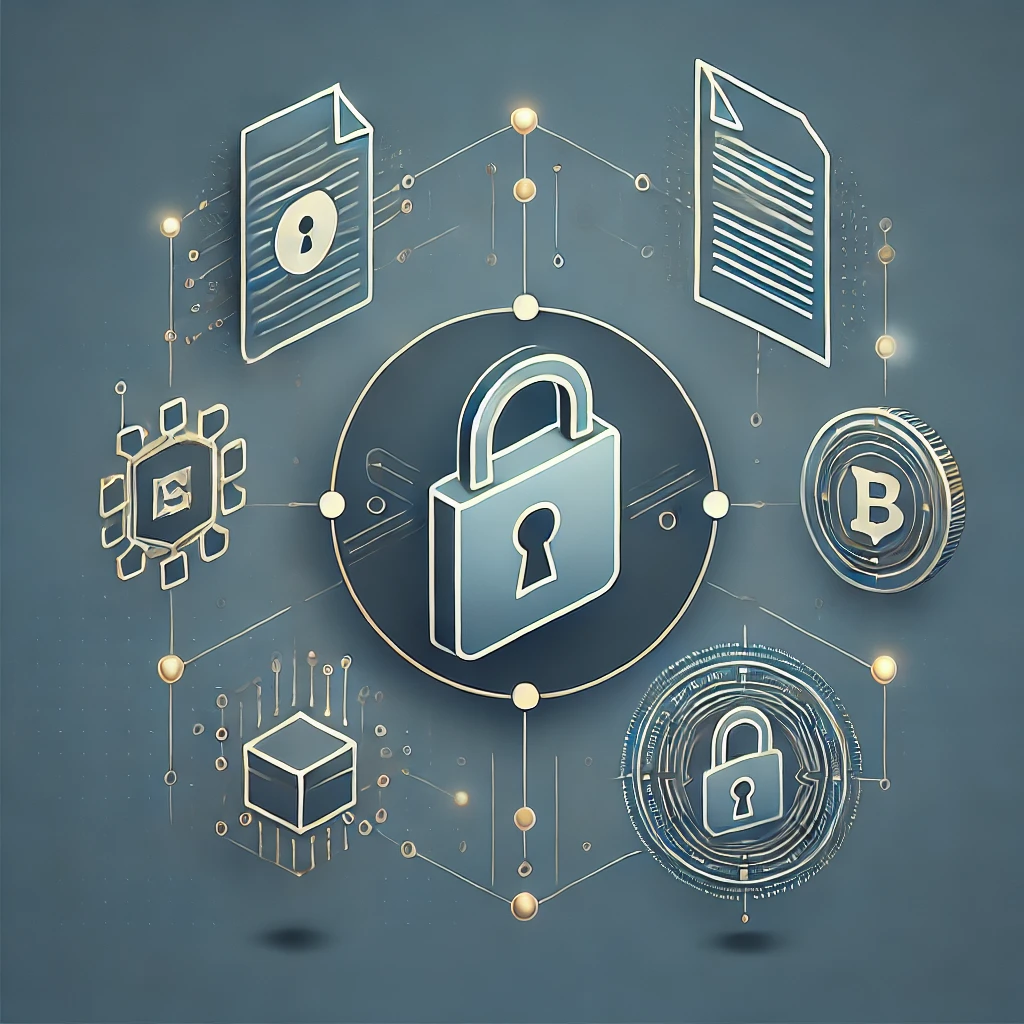The Role of Blockchain in Protecting Intellectual Property

Intellectual Property (IP) is a vital asset for creators, businesses, and innovators across various industries. It encompasses patents, trademarks, copyrights, and trade secrets that give individuals and organizations exclusive rights to their creations and inventions. However, protecting IP in the digital age is challenging due to the ease with which digital files can be copied, shared, and altered. The rise of blockchain technology offers a promising solution to many of the challenges faced in IP protection. By providing a transparent, immutable, and decentralized ledger, blockchain has the potential to revolutionize the way IP is tracked, authenticated, and protected.
In this article, we will explore how blockchain technology is changing the landscape of intellectual property protection, the advantages it brings, and the practical applications of blockchain in safeguarding IP rights.
1. The Challenges of Protecting Intellectual Property in the Digital Era
Before diving into how blockchain can help, it’s essential to understand the challenges involved in protecting intellectual property in today’s digital environment:
- Piracy and Counterfeiting: With the digital age came the ease of reproducing and distributing creative works like music, films, software, and even patented inventions. Intellectual property theft, such as piracy and counterfeiting, has led to significant losses in industries like entertainment, fashion, and pharmaceuticals.
- Lack of Transparency: The traditional IP protection system often lacks transparency and can involve lengthy, expensive legal processes to resolve disputes. Tracking the provenance of digital assets can be difficult, making it challenging to prove ownership or ensure the original creator’s rights are respected.
- Complexity in Licensing and Distribution: Licensing and distributing IP across multiple platforms or territories is often fraught with complications. The process of tracking royalty payments, negotiating contracts, and ensuring compliance with licensing agreements can be cumbersome and prone to errors.
- IP Theft and Infringement: Despite the best efforts to protect intellectual property, infringement remains a persistent problem. With the global nature of the internet, enforcing IP rights across borders can be a logistical nightmare.
Blockchain, with its decentralized and transparent nature, offers a way to overcome many of these hurdles and provides a solid framework for tracking, verifying, and enforcing IP rights.
2. Blockchain Technology and Intellectual Property Protection
Blockchain is a distributed ledger technology (DLT) that enables data to be stored in a decentralized, transparent, and immutable manner. Each record or transaction is stored in a “block,” and these blocks are linked together in a chain, creating an unchangeable history of transactions. The key features of blockchain that make it a powerful tool for IP protection are:
- Decentralization: Blockchain operates without a central authority, meaning there is no single point of control or failure. This makes the system more secure and resistant to fraud, tampering, and hacking.
- Immutability: Once data is recorded on the blockchain, it cannot be altered or deleted without the consensus of the network participants. This ensures that IP records, once added to the blockchain, are permanently secured.
- Transparency: Blockchain transactions are visible to all participants, creating a transparent system that ensures ownership, licensing, and royalty payments are easily tracked and verified.
- Smart Contracts: Blockchain supports the use of smart contracts, self-executing contracts with predefined conditions that automatically enforce the terms once certain conditions are met. These can be used to manage IP licenses, ensuring creators receive payments when their work is used, and enforcing licensing agreements without the need for intermediaries.
By leveraging these features, blockchain technology can address the major challenges of IP protection, offering a more secure, transparent, and efficient alternative to traditional methods.
3. Applications of Blockchain in Intellectual Property Protection
Several key areas in IP protection can benefit from blockchain technology. These include registration, licensing, royalties, and enforcement.
a. IP Registration and Proof of Ownership
One of the primary uses of blockchain in IP protection is as a means of registering and proving ownership of intellectual property. Traditionally, creators must register their work with government authorities, which can be a lengthy and expensive process. With blockchain, creators can register their works directly on a decentralized platform, where a timestamped record of the IP is stored on the blockchain.
For example, artists can upload their digital art, music, or other works to a blockchain-based platform, creating a permanent, immutable record of their ownership. This can be particularly useful in proving the authenticity of a work and protecting it from unauthorized use or infringement. Blockchain’s immutability ensures that the record cannot be tampered with, offering creators a higher level of security and peace of mind.
b. Licensing and Royalty Management
Blockchain technology can also streamline the licensing process by making it easier to create, track, and enforce IP licenses. Smart contracts can be used to define the terms of a licensing agreement, automatically executing payments when predefined conditions are met. For instance, a musician who licenses their music can set up a smart contract that automatically pays them royalties every time the song is played on a streaming platform.
This removes the need for intermediaries, such as record labels or licensing agencies, reducing the risk of fraud or delayed payments. It also ensures that payments are transparent, traceable, and immediately processed, improving the overall efficiency and fairness of the licensing process.
c. Copyright Protection and Tracking
Copyright holders often face the challenge of tracking unauthorized use of their work. Blockchain can help by providing a transparent and verifiable record of each time a piece of intellectual property is used, shared, or distributed. For example, a software developer can use blockchain to track when their code is used in other projects, ensuring they receive appropriate credit or compensation.
Additionally, blockchain can serve as a secure and verifiable registry for IP rights. By using blockchain to store metadata associated with IP, such as licensing agreements, usage rights, and ownership information, creators and businesses can more easily prove their legal ownership and manage their IP portfolios.
d. Preventing IP Theft and Infringement
Blockchain’s ability to create an immutable and transparent ledger makes it a powerful tool for preventing intellectual property theft and infringement. By storing a public record of IP rights and usage on the blockchain, it becomes much more difficult for unauthorized parties to claim ownership of a work.
In the event of a dispute, blockchain’s transparent nature allows for a clear, verifiable record of ownership and transactions, providing a reliable source of evidence in legal proceedings. This can significantly reduce the time and costs associated with IP enforcement, as the blockchain serves as an indisputable source of truth.
e. Cross-Border IP Enforcement
Enforcing intellectual property rights across borders is often challenging, especially in the globalized digital economy. Blockchain provides a solution by creating a global, standardized registry for IP rights. This allows creators to register their works once and have their rights automatically recognized worldwide. Additionally, the transparency of blockchain enables easier enforcement of IP rights in multiple jurisdictions, as all parties involved have access to the same, unalterable data.
4. Benefits of Blockchain for IP Protection
The integration of blockchain in IP protection offers several significant benefits:
- Security: Blockchain’s decentralized and immutable nature makes it extremely secure against fraud, tampering, and theft. Once IP data is registered, it cannot be altered, ensuring that ownership remains protected.
- Transparency: Blockchain offers a transparent and auditable record of ownership, licensing, and usage, making it easier for creators to track how their intellectual property is being used and ensuring fair compensation.
- Cost Efficiency: By reducing the need for intermediaries and automating processes like royalty payments through smart contracts, blockchain can lower administrative costs associated with IP management.
- Global Accessibility: Blockchain allows creators to protect their IP globally, without the need for multiple registrations or complex international legal processes. It also ensures that IP rights are recognized worldwide.
- Reduced Fraud and Infringement: The transparency and immutability of blockchain make it more difficult for counterfeiters to exploit intellectual property or for IP theft to go unnoticed.
5. Challenges and Considerations
While blockchain holds significant promise for IP protection, there are several challenges to consider:
- Adoption and Integration: Blockchain technology is still emerging, and its adoption in the IP sector may be slow. Existing IP frameworks and systems need to be integrated with blockchain-based solutions, which can be complex and costly.
- Legal and Regulatory Frameworks: The use of blockchain for IP protection raises legal and regulatory questions, especially with regard to copyright, licensing, and enforcement. Governments and institutions will need to develop new policies and standards to accommodate blockchain-based IP systems.
- Scalability and Cost: Blockchain networks can be resource-intensive, and the scalability of these systems could be an issue when dealing with large volumes of data, especially in industries like music or film, where millions of works may need to be registered.
6. Conclusion
Blockchain technology is revolutionizing the way intellectual property is protected, offering a secure, transparent, and efficient means of managing IP rights. From providing proof of ownership and preventing infringement to simplifying licensing agreements and royalty payments, blockchain has the potential to address many of the challenges faced by creators, businesses, and legal professionals in the IP space. However, its full potential can only be realized if the technology is widely adopted, integrated into existing systems, and supported by strong legal frameworks. As the blockchain ecosystem matures, it is likely to become an essential tool in the fight against IP theft and infringement, ensuring creators are properly compensated for their work and that their intellectual property is protected in the digital age.






